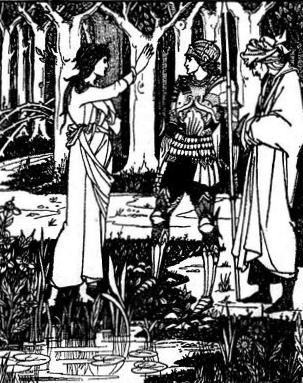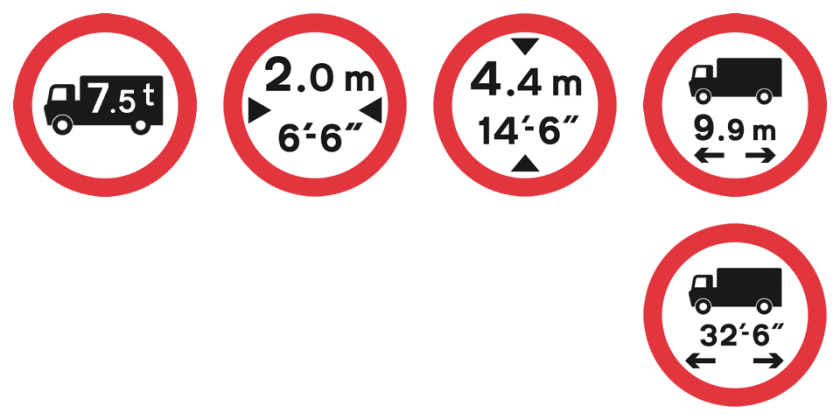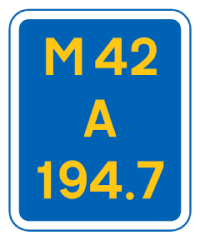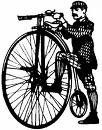A slow metric transition in Britain has led to widespread myths about metrication in the UK. Unfortunately, many (but certainly not all) anti-EU campaigners have also opposed metrication and have spread myths about metrication to attack Britain’s participation in the EU.

Britain was forced to adopt metric by the European Union
Britain decided to adopt metric units and decimal currency in the mid 1960s well before joining the EEC. Read more
Britain designs its roads using imperial
Maps, road designs and most motoring regulations are in metric. Read more
Signage with metric units is illegal in the UK
Traffic signs allow limited use of metric units, however private signage has no unit restrictions. Read more
Adopting metric will forbid expressions like ‘miles better’ or ‘pound of flesh’
Figures of speech are not determined by prevailing measurement units. Metric will make no difference. Read more
Adopting metric will mean that place names such as ‘Mile End’ or street names like ‘Royal Mile’ will have to be converted.
There is no need to change names with metric conversion. Read more
Imperial units are part of our British heritage and should not be phased out
Penny farthing bicycles are part of our British heritage but they belong in museums. The same applies to imperial units. Read more
Britain was forced to adopt metric by the European Union
This myth has been widely repeated in the British news media and by anti-EU politicians. It simply does not stand up to an examination of the facts.
In the mid 1960s, British industry and the government were concerned about our continued use of old-fashioned (non-decimal) currency and measurement units. The government decided to reform both currency and measurement units, announcing its intention to convert to metric in 1965. This was at a time when accession to the European Economic Community (EEC) seemed very remote. The UK joined the EEC in 1973 along with Ireland and Denmark.
In fact the history of metrication in Britain goes back at least until the 1860s. A detailed timeline is given here.
Britain designs its roads using imperial
In the UK map-makers, surveyors and highway engineers have used metric for decades.
Britain’s Ordnance Survey maps adopted a kilometre-based National Grid in the 1940s. Subsequently other map-makers have adopted grids based on kilometres.
Civil engineers design roads using metric units. Most regulations regarding the design and signposting of roads use metric. However, confusingly, metric distances are forbidden on traffic signs.
For more information click here.
Signage with metric units is illegal in the UK
There are different rules of signage. Traffic signs are regulated by the Traffic Signs Regulations and General Directions (TSRGD).

These require the use of tonnes for weight restrictions, and the use of metres (alongside feet and inches) for all new width, height and length restriction signs.

TSRGD diagram 2718
Driver location sign – location reference in kilometres
With the exception of driver location signs, which are marked in kilometres, the TSRGD does not authorise the use of metres or kilometres for marking distances.
However, the TSRGD regulations do not apply to other signage where planning rules govern the erection of signage but not what is written on them. Individuals, organisations or local authorities may obtain permission to erect signage with metric units on them.
For more information click here.
Adopting metric will forbid expressions like ‘miles better’ or ‘pound of flesh’
Figures of speech have often referred to coinage or measurement units even if they are obsolete. Drivers today talk about ‘turning on a sixpence’ even though the sixpence coin was withdrawn in 1980. People talk of ‘fathoming’ an issue although ropes knotted in fathoms are no longer used to measure depth in the sea.
There is no reason to change figures of speech when adopting metric. Figures of speech develop naturally and did not change in Australia and New Zealand with their metric conversion.
With regard to Shakespeare’s reference to Shylock’s pound of flesh, remember that the pound used in Venice consisted of 12 Italian ounces! The Italian ‘pound’ in the figure of speech was never converted to 12 imperial ounces.
Adopting metric will mean that place names such as ‘Mile End’ or street names like ‘Royal Mile’ will have to be converted.
Some journalists have claimed that if the UK converts to metric it will be necessary to convert place or street names too. For example it has been claimed that Edinburgh’s Royal Mile will become the 1.609 Kilometre!
This is, of course, complete nonsense. No country that converted from imperial to metric ever changed names. For example, One Mile in Queensland kept its name when Australia converted to metric in the 1970s.
Imperial units are part of our British heritage and should not be phased out
Our heritage is important but that does not mean to say that heritage things are fit for purpose today. Things like the penny farthing bicycle or suits of armour are part of our heritage but not suitable for modern transport or warfare. They should be preserved in museums.

Similarly imperial units and £/s/d currency are not fit for purpose in the 21st century but should be preserved in museums as part of our history.
